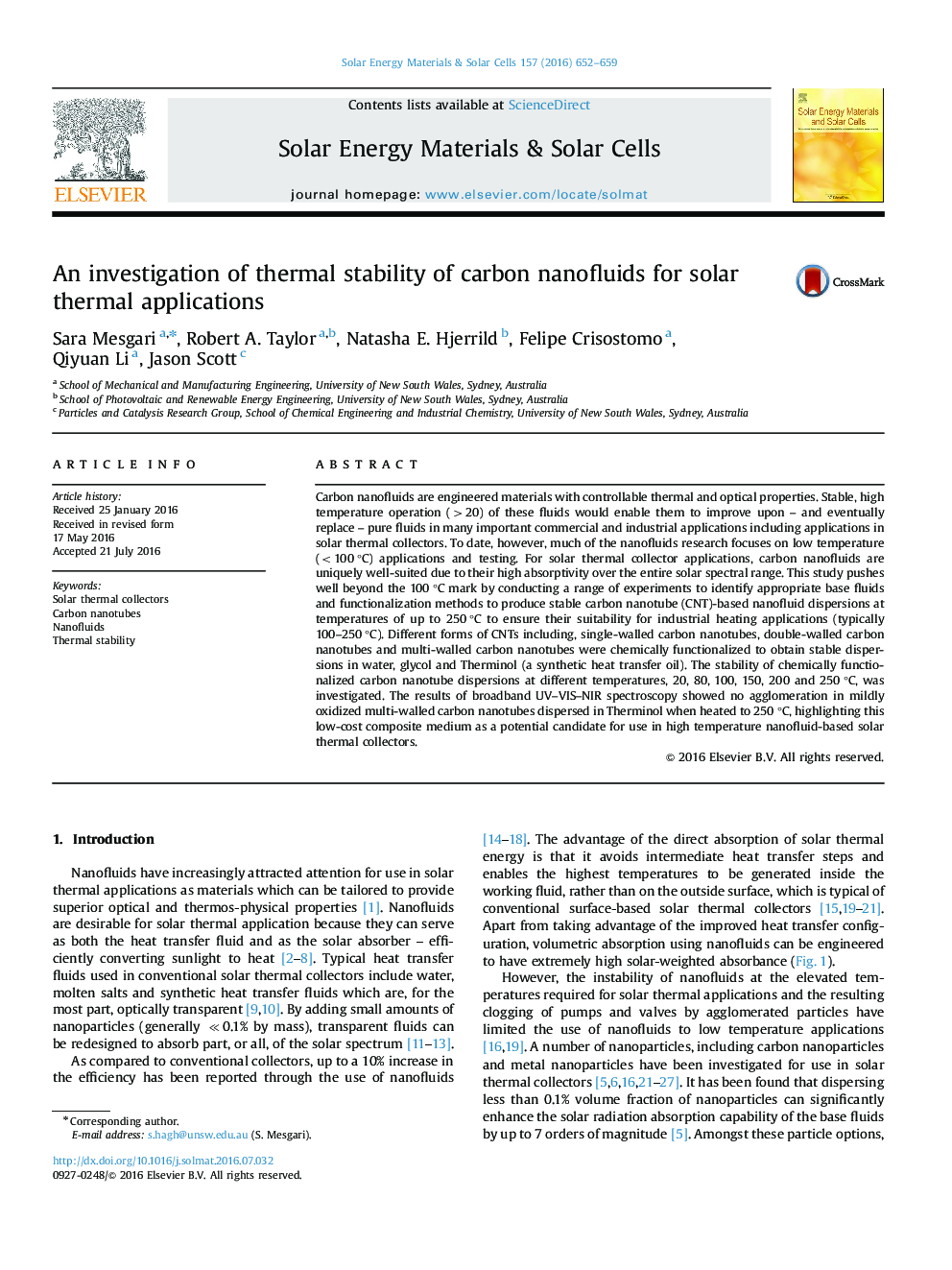| Article ID | Journal | Published Year | Pages | File Type |
|---|---|---|---|---|
| 6534640 | Solar Energy Materials and Solar Cells | 2016 | 8 Pages |
Abstract
Carbon nanofluids are engineered materials with controllable thermal and optical properties. Stable, high temperature operation (>20) of these fluids would enable them to improve upon - and eventually replace - pure fluids in many important commercial and industrial applications including applications in solar thermal collectors. To date, however, much of the nanofluids research focuses on low temperature (<100 °C) applications and testing. For solar thermal collector applications, carbon nanofluids are uniquely well-suited due to their high absorptivity over the entire solar spectral range. This study pushes well beyond the 100 °C mark by conducting a range of experiments to identify appropriate base fluids and functionalization methods to produce stable carbon nanotube (CNT)-based nanofluid dispersions at temperatures of up to 250 °C to ensure their suitability for industrial heating applications (typically 100-250 °C). Different forms of CNTs including, single-walled carbon nanotubes, double-walled carbon nanotubes and multi-walled carbon nanotubes were chemically functionalized to obtain stable dispersions in water, glycol and Therminol (a synthetic heat transfer oil). The stability of chemically functionalized carbon nanotube dispersions at different temperatures, 20, 80, 100, 150, 200 and 250 °C, was investigated. The results of broadband UV-VIS-NIR spectroscopy showed no agglomeration in mildly oxidized multi-walled carbon nanotubes dispersed in Therminol when heated to 250 °C, highlighting this low-cost composite medium as a potential candidate for use in high temperature nanofluid-based solar thermal collectors.
Related Topics
Physical Sciences and Engineering
Chemical Engineering
Catalysis
Authors
Sara Mesgari, Robert A. Taylor, Natasha E. Hjerrild, Felipe Crisostomo, Qiyuan Li, Jason Scott,
